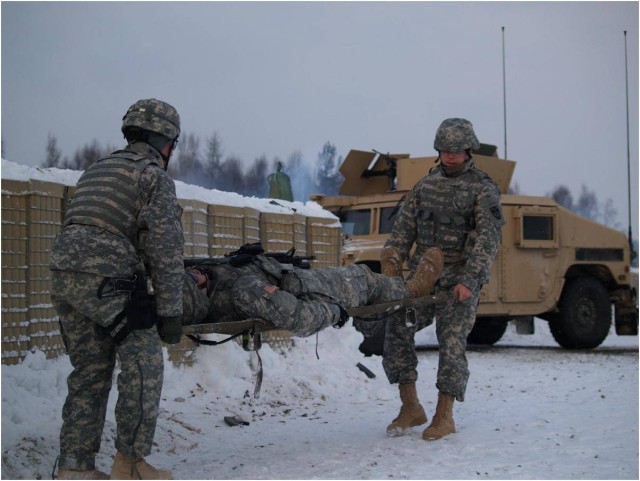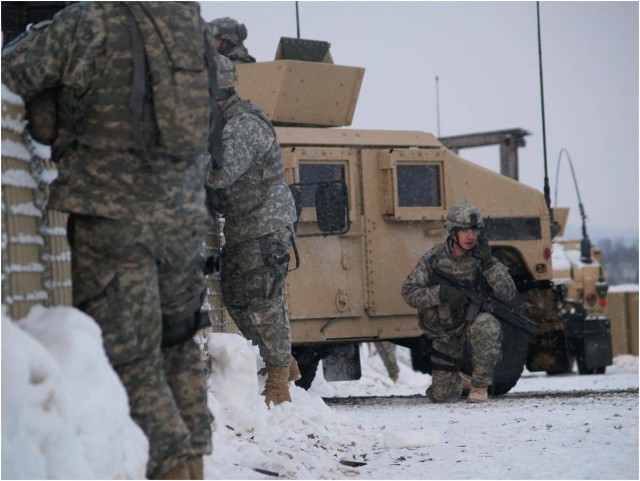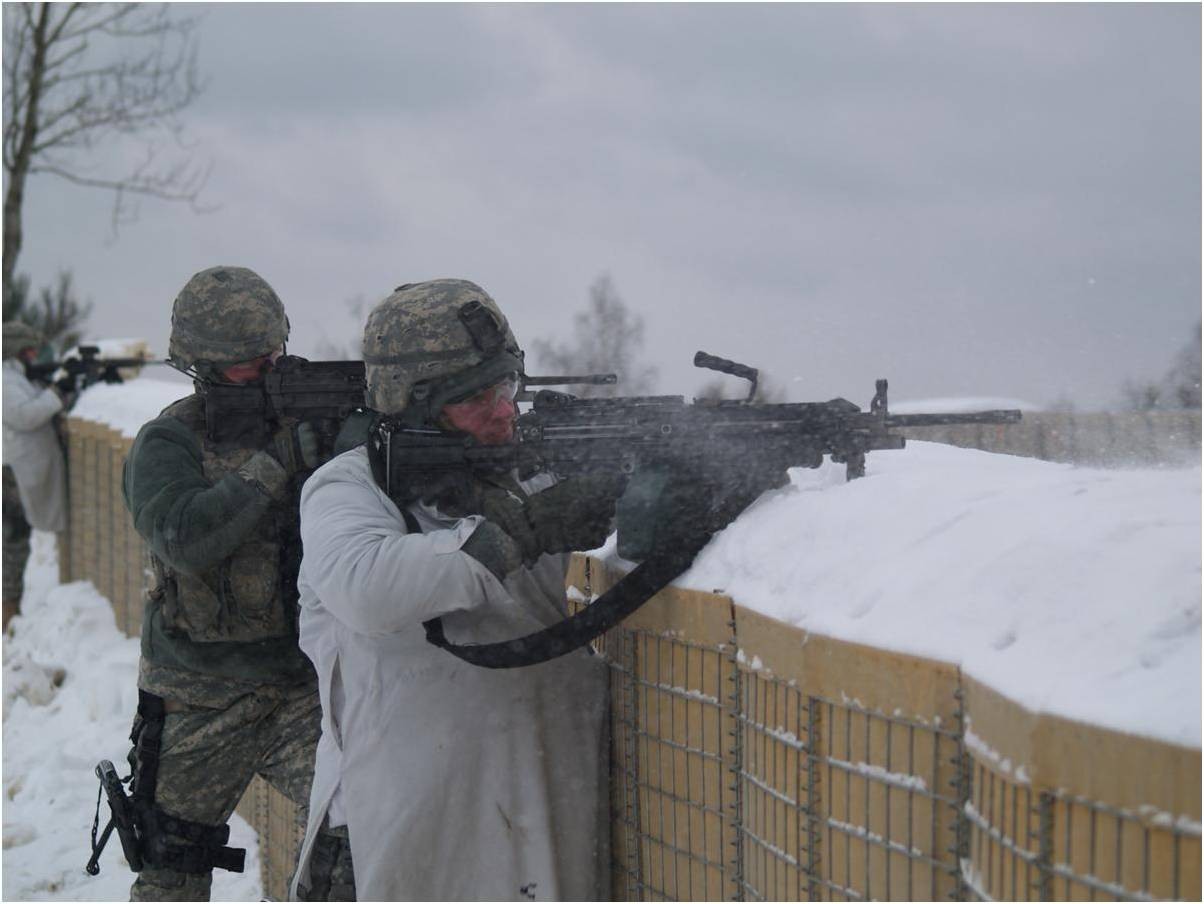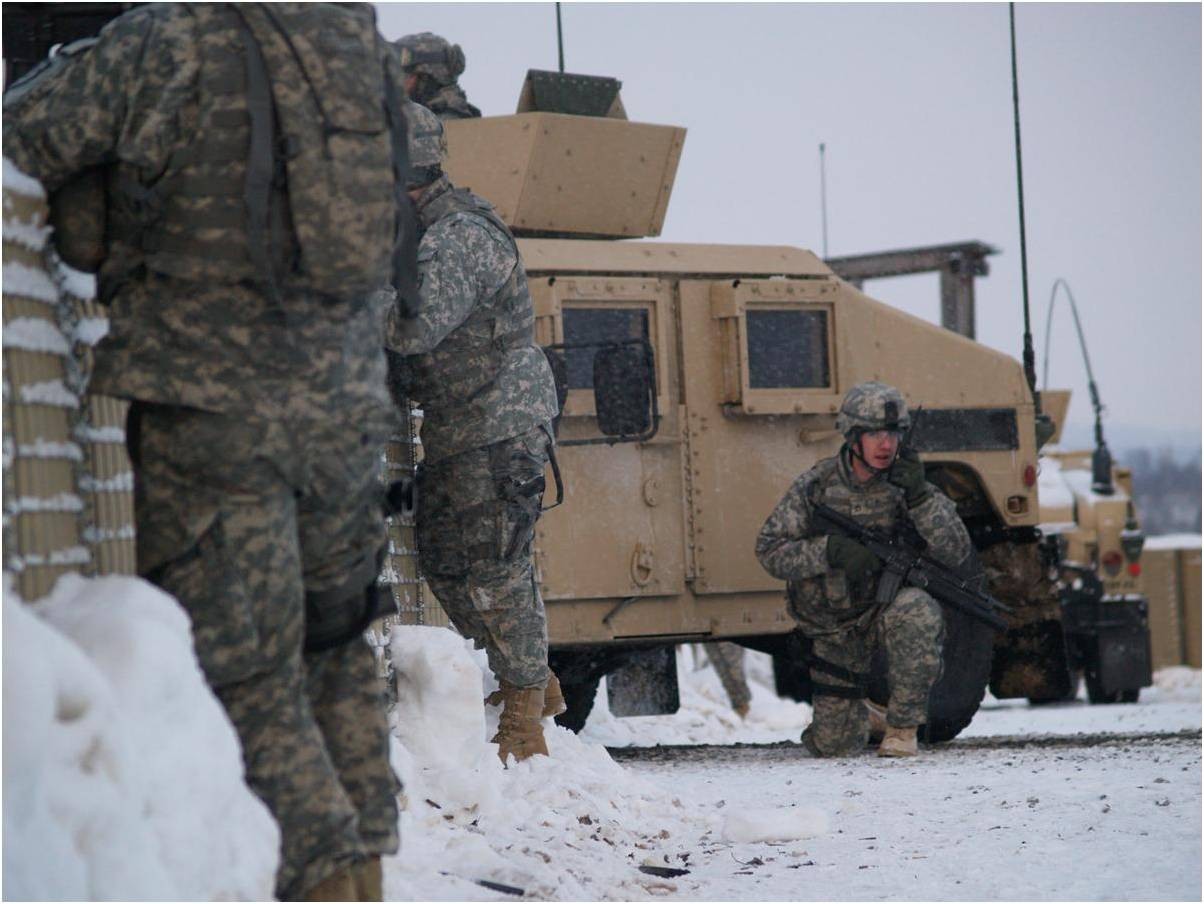GRAFENWOEHR, Germany- There is a bitter cold silence between the snow-covered trees and the icy air of the Grafenwoehr Training Area (GTA). Out of nowhere, the silence is broken by the sound of grenade launchers and M4's fired by the Soldiers training on Range 201, a 360 degree combat outpost (COP) live-fire training facility.
Due to its vast number of ranges and the ability to adapt them to meet the training unit's needs, the Joint Multinational Training Command provides units one-stop training support by providing them the resources to conduct quality training. In particular, the COP live-fire facility provides unit a training environment that allows them to employ all elements in their arsenal- like weaponry, vehicles, and communication equipment -into a pertinent training scenario, with the appropriate digital interfaces, to meet their needs. The COP live-fire facility at the GTA is the first one of its kind in the Military.
"COP Live Fire differs from regular training in that it has a 360 degree fires capability. A unit can fire in any direction," said Cpt. Ian McCollum of the GTA Range Operations. "We take advantage of this by surrounding the entire COP with targets. This allows leaders the opportunity to practice fire discipline, fire distribution, and defensive priorities of work, to name a few, and soldiers to practice target acquisition and fire control."
With conditions and sounds simulating real combat, the709th Military Police (MP) Battalion trained on several combat scenario their Soldiers might face during their deployment in the upcoming year. One training scenario utilized by the battalion was based on a real-life incident in which International Security Assistance Force troops were attacked by 300 Taliban members, killing eight Americans and wounding 22. During the scenario, Soldiers implemented tactical movements, while team leaders relayed critical information, like the need for more ammunition or additional firepower, to platoon leaders.
"In this type of situation the platoon leaders do not engage in combat," said 2nd Lt. Tillman Busbee, a platoon leader in the 709th MP Battalion. "They coordinate the entire operation."
If Soldiers run short or are out of ammo, they have to have a direct line of communication to their platoon leaders, which was an objective emphasized during the exercise.
"We communicate a lot when it comes to ammo so that two big weapons do not go down at the same time," said Capt. Rebecca Doak of the 709th MP Battalion.
The Soldiers in the guard towers on all four corners of the perimeter are the most important aspect of the whole exercise. They ensure all team movements are spread throughout the established 360-degree perimeter of the range in order to keep everyone from focusing on one point.
"Each team has a sector and can only move so much," said Busbee, "The Soldiers in the towers can see where the focus is needed and can help out one team, if necessary. This prevents everyone from going to one team's side and neglecting their own side."
Some team members were also designated as Afghan National Police (ANP) role players. By having team members play the part of the ANP, Soldiers can work on their foreign communication skills and learn to work together with foreign nationals just as they will have to during deployment.
"Having role players pose as the Afghan National Police helps the team get used to the idea of having a language barrier between themselves and some of the team members," said Busbee.
"It is like playing a basketball game with someone who has never played before. You have to communicate things to them in ways that they will understand."
Whether it is replicating the operational environment or offering units an opportunity to train on their tactics, the JMTC gives commanders and staffs a world-class capability to conduct individual and crew live-fire qualification and company-team training exercises.






Social Sharing